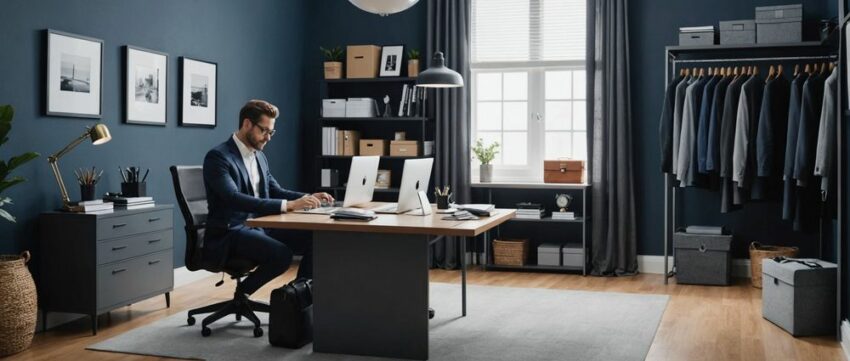In today’s image-driven world, what you wear can significantly influence how others perceive you and your personal brand. It’s not just about fashion; it’s about making a statement that resonates with your identity and values. Your clothing choices can communicate your professional ambitions, creativity, and personality without you saying a word. Thus, understanding how to curate your attire thoughtfully becomes essential for reinforcing your personal brand. This article will explore actionable strategies for harnessing your wardrobe to project a strong and authentic personal brand.
Understand Your Personal Brand

Before diving into fashion choices, you first need to define what your personal brand represents. Consider the following aspects:
- Core Values: Identify what principles are non-negotiable for you. These could range from creativity and innovation to sustainability and professionalism.
- Target Audience: Define who you want to attract with your personal brand. Are you aiming for clients, employers, or followers?
- Industry Standards: Research fashion norms in your field. Are there specific styles that align better with your desired image?
- Unique Selling Proposition (USP): What makes you stand out? It might be your creativity, your analytical mind, or your leadership style.
Once you have a clear understanding of these elements, aligning your wardrobe with your personal brand will become much easier.
Choose the Right Colors and Styles
Color psychology plays a crucial role in how your clothing impacts your personal brand. Different colors evoke different emotions and perceptions:
- Blue: Conveys trust and dependability, often ideal for corporate settings.
- Red: Signifies passion and energy, excellent for creative fields.
- Green: Represents growth and harmony, perfect for sustainability advocates.
- Black: Suggests sophistication and elegance, suitable for high-powered executives.
In conjunction with color, the style of clothing can also communicate a lot about your brand. Tailored pieces can suggest professionalism, while relaxed or eclectic styles can indicate creativity. Consider how each piece in your wardrobe reflects your personal brand and make adjustments accordingly.
Accessorizing Wisely
Accessories can elevate your outfit while adding an extra layer of personal branding. Choose accessories that enhance your style without overshadowing the primary garments. Here are a few strategies to consider:
- Statement Pieces: A bold jewelry piece or unique handbag can serve as a conversation starter.
- Minimalist Accessories: Opt for understated yet elegant pieces that highlight your professional side.
- Functional Accessories: Items like high-quality bags or tech gadgets can demonstrate your practicality especially in a professional context.
When selecting accessories, remember that they should align with your overall brand message and not detract from your main style. A cohesive look is always more impactful.
Stay Authentic and Comfortable

While striving to build a strong personal brand through your attire, authenticity and comfort should not be sidelined. Wearing outfits that don’t resonate with your true self will show in your demeanor and confidence level. Always opt for pieces that make you feel good inside and out. Consider the following points:
- Familiarity: Choose styles that you are comfortable wearing every day.
- Body Positivity: Every body is different; celebrate your uniqueness by choosing fits that flatter your shape.
- Versatility: Prioritize items that can be styled in various ways for different occasions.
- Personal Touch: Incorporate personal elements in your wardrobe, whether through fabrics, patterns, or cuts you adore.
Your clothing choices should enhance your comfort rather than distract you from presenting your best self. When you feel comfortable, your confidence will shine through, amplifying your brand message.
Make a Consistent Fashion Statement
Consistency is key when it comes to personal branding. Once you’ve defined your brand, ensure that your attire polishes that message across all platforms and occasions. This involves being mindful of the image you project consistently, whether in the workplace, social media, or casual outings. Consider these tips for maintaining a consistent fashion statement:
- Create a Signature Look: Develop a recognizable style that you can integrate into different outfits.
- Document Your Wardrobe: Keep track of outfits and styles that communicate your brand effectively.
- Update Regularly: While consistency is essential, evolving your style to reflect growth and changes in your personal or professional life is vital.
By being deliberate about your fashion choices, you reinforce your personal brand meaningfully and memorably.
Conclusion
Portraying your personal brand through what you wear is not merely an exercise in fashion; it’s about creating an authentic representation of who you are and what you stand for. By understanding your brand, selecting appropriate styles and colors, accessorizing wisely, staying authentic, and maintaining consistency, you can significantly impact how others perceive you professionally and personally. Your wardrobe is a powerful tool—use it to tell your story authentically and compellingly.
FAQs
1. How do I define my personal brand?
Start by identifying your core values, your target audience, unique qualities, and the message you want to communicate in your professional life.
2. What colors are best for projecting a professional image?
Colors like blue, black, and gray are often associated with professionalism, while reds and greens can convey energy and creativity, respectively.
3. Can accessories really change my personal brand image?
Yes! Thoughtful accessories can enhance your look by adding individuality and flair, making your style more memorable.
4. How can I stay comfortable while looking professional?
Choose fabrics that are soft and breathable, and select fits that empower you to move freely while maintaining a polished appearance.
5. Should I change my wardrobe frequently to keep up with trends?
It’s essential to stay updated with styles but prioritize timeless pieces that resonate with your brand. Periodically refresh your wardrobe without losing your core style.
